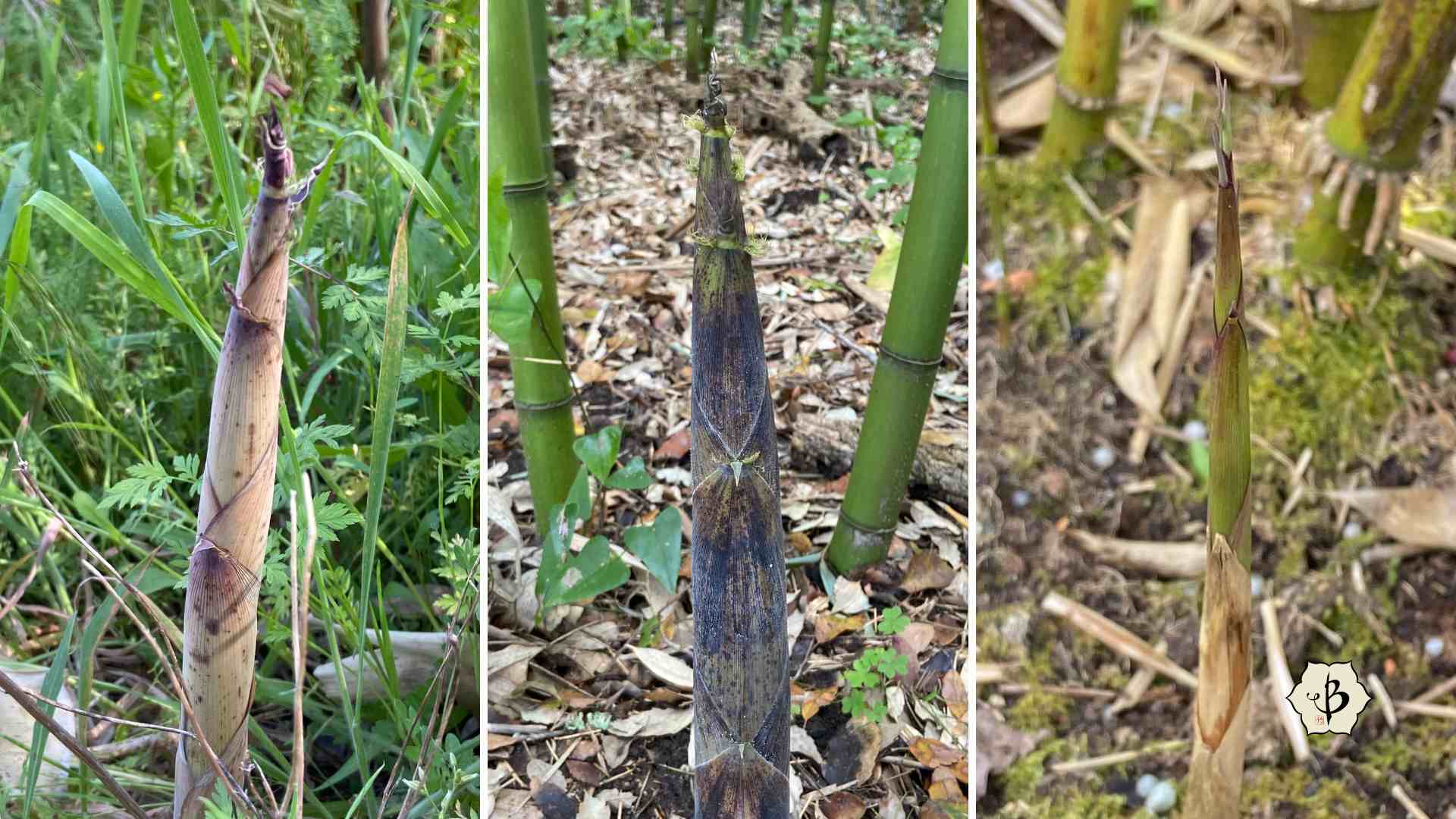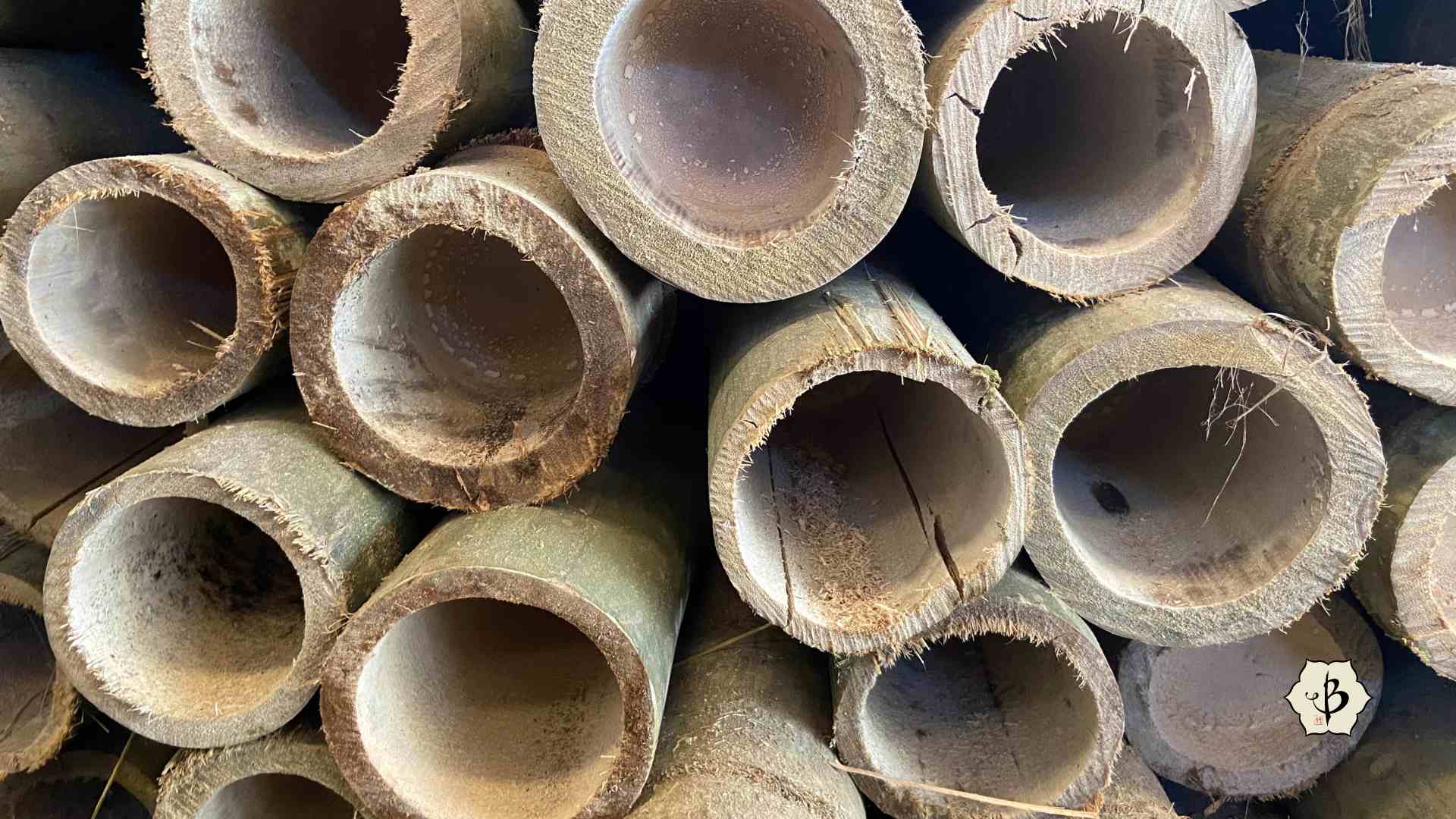As a matter of fact, bamboo is neither a tree nor a bush. Bamboo is a grass, belonging to the family Poaceae, sometimes called Gramineae. The same botanical family comprises some 12,000 species of monocotyledonous flowering plants, including cereals and grains, as well as lawns and golf courses.
NOTE: This article first appeared in July 2019, most recently updated in June 2024.
Keep on the Grass
The fact that bamboo grows so tall (often to more than 100 feet) and becomes so woody (even harder than maple or red oak) makes it easy to mistake for a tree. But there are several definite characteristics to help us identify bamboo as a grass.

Bamboo growth habit
One interesting feature of bamboo is that an individual stalk will grow to its full height in a single growing season. Unlike other trees and shrubs, the bamboo will not continue to grow taller year after year. In subsequent years, the poles may put out more lateral shoots, becoming increasingly bushy, although the amount of bushiness will depend on the variety. But their height will not change.
It’s true however that younger bamboo plants will put up shorter shoots than mature plants, more than four or five years of age. So in this sense, an older bamboo plant will be taller than a younger one. But that’s not because the shoots keep getting taller. It’s only because the newer, more mature shoots have a greater height capacity. The culms of a more mature bamboo plant will also have a greater diameter.
This is fairly typical of grasses. They put up fresh growth which quickly reaches full height, and then spread from the base. Pruning from the top with encourage more fresh growth and bulk, but clipped blades or culms will not get any taller.
Annual and Perennial Grasses
Maybe when you think of grasses, you think about grains like corn and wheat that grow for one season, go to seed, and then die. That sure doesn’t sound like bamboo. No, those are annual grasses.
But there are plenty of perennial grasses as well. Just think about the grass in your front yard (or your neighbor’s yard). Or other ornamental grasses, like blue fescue or fountain grass. The keep putting up fresh growth each year, slowly expanding their footprint. Eventually, after five or ten years, they may die. Every plant has some sort of life expectancy, even perennials.

Bamboo propagation
Most annual grasses rely on seeds to propagate themselves each year. But most perennial grasses spread with their rhizome roots.
See our in-depth articles on Bamboo Flowering and Running Bamboo.
When you cut down bamboo, it’s not dead, because it lives underground. Cutting bamboo is something like mowing your lawn. It actually promotes more growth and helps keep the plants looking fresh and vibrant.
Again, think of other ornamental grasses. Fountain grass, for example, should be cut all the back at least once a year. Otherwise, it starts to look shaggy and haggard. Now you probably don’t want to cut your bamboo back this hard, because it would take a couple years to fill out again. But it is a good idea to go through periodically and cut out some of the old growth.
Mowing the lawn?
There are some dwarf varieties of bamboo that only grow a few inches tall, and they make a great ground cover, particularly in a Japanese garden. You should actually cut these back every year, maybe even with a lawnmower on a high setting. It’s especially a good idea if you are gardening in a colder climate where the bamboo leaves are likely to go brown in the winter.

Shape and structure
With giant timber bamboo, which can get more than five inches in diameter, it’s tempting to refer to the girth of a bamboo pole as a trunk. But this is tree talk, and does not apply to bamboo.
As a grass, the individual stalks are hollow and should be referred to as culms. But we often call them canes, or shoots, in the case of fresh growth. Sometimes we call them poles, but that’s more appropriate for a culm that has already been cut down.
When new culms emerge from the ground, they appear like conical shoots, with a sharp point. Usually the fresh shoots are wrapped in a protective paper, known as a culm sheath. This is another typical feature of grass. As the culms get bigger, they outgrow their sheaths, which dry up and peel off.
And watch out, because they grow mighty fast. As mentioned above, the bamboo culms will reach their full height—which could easily be somewhere between 10-100 feet tall—in a single season.

Further Reading
For more fun facts about bamboo, check out some of our other great articles.
- Ask the experts: 12 Common questions about bamboo
- The complete guide to growing bamboo
- 10 Best bamboo varieties for your garden
- Bamboo anatomy
- Woody vs Herbaceous bamboo
FEATURE IMAGE: A healthy grove of bamboo clumps, genus Bambusa. Photo by Fred Hornaday.




















